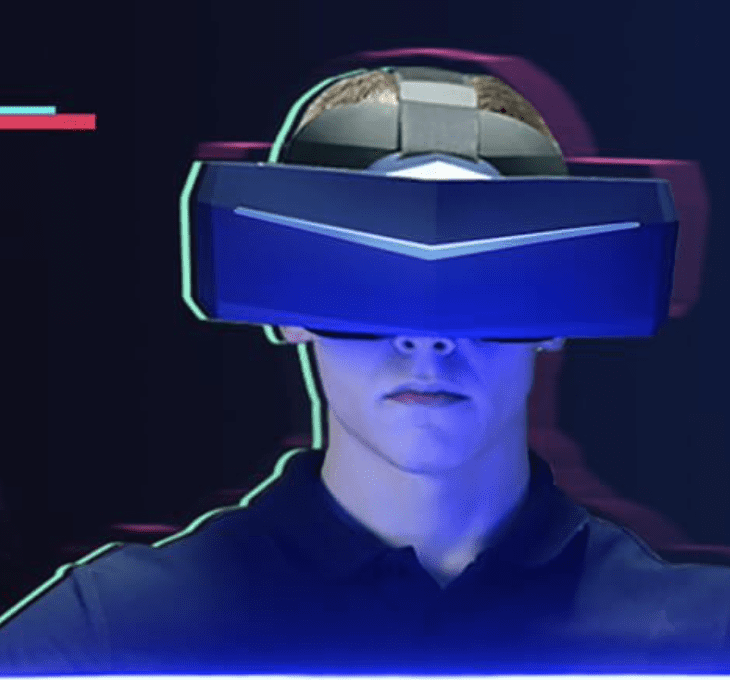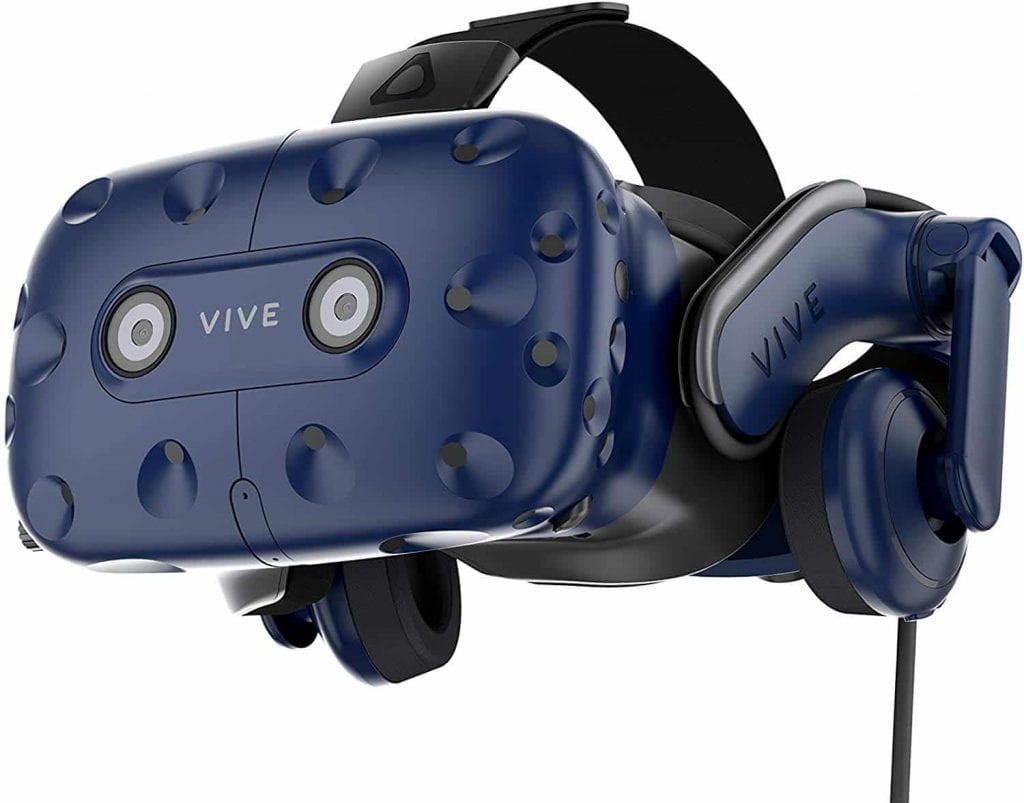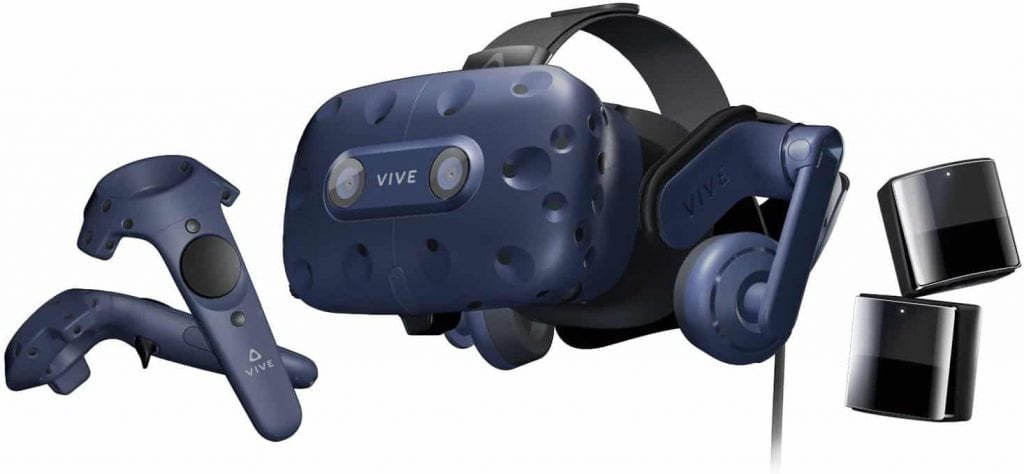Virtual reality is the best thing that has ever happened in the entertainment industry. That is why you need something like the Pimax 8K and Vive Pro to get indulged in this amazing world.
When you hear the company HTC, it automatically associates you to virtual reality. They have produced VR headsets that allow us to experience what virtual reality can offer.
They have models that most companies cannot match. HTC has been upgrading its models as well and one of those models is the HTC Vive Pro that really took off when it was released.
Pimax is a rather new company when it comes to producing VR headsets. However, they have proved that they can match their competitors or even do something that is better.

Since the release of their first VR headset, Pimax has been the talk of the town. They were able to produce the 8K headset that offers features that were expected to be produced in the future.
They have truly advanced and the fact that it was their initial release really proves what more they can do. This headset is not that cheap though, so you need to invest a lot of money.
The Vive Pro is one of the earlier upgrades from the pioneers of VR headsets. It costs a little cheaper than the Pimax 8K but you still need to invest in the accessories that are needed.
Trying to find the right headset for your VR journey will not be easy. So we are here to help you by comparing two of the best VR headsets on the market as of the writing of this review.
Stick around and turn on your geek mode as we dive into the specs, features, and performance of these amazing headsets from Pimax and HTC.
Table of Contents
Display
One thing that you should look for in the display is the quality and material that the headsets use in producing images and colors for a more immersive experience.
The Vive Pro uses AMOLED on its display which is one of the best materials. Compared to most displays, AMOLED gives off a more vivid color for a more realistic display.
We cannot deny that the AMOLED display of the Vive Pro still has a little bit of screen door effect but as you play along, you will hardly notice the gaps on the pixels.

The Pimax 8k uses a close relative of the AMOLED. It uses LED for its display which is also great in portraying realistic images and movements without glitching and stopping.
Since the Pimax 8K is a newer model, they made sure to erase most of the problems on earlier models. They have removed most of the screen door effect with their new lenses.
The tweaking of colors also made the Pimax 8K a real contender when it comes to the display. The combining of colors made the headset more realistic and smoother when displaying images.
The display of the Pimax 8K does not stop there as it also has another set of LEDs. Pimax added another layer of LED on the background to mix the colors even better.
Resolution
The Vive Pro is one of the average models when it comes to the resolution. It offers 1440 by 1600 resolution on each lens which is pretty good for high-definition displays.
It also removes some of the nauseous effects that most VR headsets have. This display can still be improved so we will have to wait for the next announcement from HTC.
Nonetheless, the resolution of the Vive Pro is still impressive as it is able to keep up with the speed of most games and the quality of videos that you want to watch.
Dual Engine Mode
When it comes to the Pimax 8K, you have two options for the resolution. The dual-engine mode allows you to change the resolution in accordance with the power of your PC setup.
The initial resolution of the Pimax 8K is at 2560 by 1440 on each lens. While this is impressive, Pimax made sure to improve that resolution if you have a powerful PC setup.
If you have one, then you can switch and upscale to the 4K resolution on each eye. This is not a native 4K resolution but it is near that resolution and you can see the difference.
The 8K name was admittedly a marketing strategy but the company developed the display immediately by releasing the 8KX which has a more accurate 8K display.
This type of resolution requires a lot of power so Pimax suggests that you use the headset with a PC setup that has at least the NVIDIA RTX 2080 gaming card to get the best display.
This type of resolution is so powerful that when we tested the headset, we were able to focus on a small object that was over 20 feet away from the perspective of the user.
Having the ability to switch from one resolution to another is also a benefit. You can choose to go faster or clearer with the optional upscale of the Pimax 8K.
Refresh Rates
This feature determines the ability of the VR headsets to run an operation smoothly. This is a combination of the resolution and the speed of the processor of the headset.
With their best systems, the Pimax 8K and the Vive Pro both have a refresh rate of 90Hz. This simply means that the display of the headsets refreshes 90 times per second.
While that is fast, 90Hz is almost below the average refresh rate. This can certainly be improved but a higher refresh rate also means that you will need a more powerful system.
The Pimax 8K also has the option of using a 75Hzz refresh rate. This is when you use the full 4K resolution option on the display as it uses a lot of power to be able to display it.
This also means that the resolution and the refresh rate are using energy from the same processor. So the higher the resolution, the lower the refresh rate and vice versa.
This refresh rate is also related to the Dual Engine Mode because once you switch to the lower resolution, you get a higher refresh rate.

Field of View
The field of view is the width of the display that the VR headset is able to show. The wider the Field of View, the more immersive the display will be for the user.
The Vive Pro has a high Field of View with 110 degrees. Although this is good, it is pretty average and it can certainly be improved for a more immersive experience.
This much Field of View will allow you to concentrate on games that you love. You can do tasks while being aware of your surroundings at the same time because of the wide display.
It is a wide-angle display but it still has some of the dark sides on your peripherals. This is not totally distracting but it would be nice if those dark areas were removed.
Pimax 8K’s Best Feature
Since we are still talking about Field of View, the Pimax 8K has one if not the best Field of View on any VR headset that is currently being sold all around the world.
The Pimax 8K has a 200-degree Field of View which is near the limits of humanity. The maximum peripheral of a human being is 210 degrees so it covers almost all of that.
That kind of display allows you to take a look at the sides of your visuals. This means that you are more immersed in the display and you will forget about the outside world easily.
But in order to attain this kind of Field of View, Pimax needed to make an adjustment on the size of the head-mounted display. It wraps around the face all the way near your ears.
So yes, the Pimax 8K has the best Field of View but it also has the largest head-mounted display which concerned us about the comfort of the VR headset.
Comfort
Having a large headset needs a lot of comfort since you are going to use it for long periods of time. Pimax made sure to put that into consideration because of the large head-mounted display.
The Pimax 8K has a standard halo strap that supports the headset so even if you wobble your head to change the display, the VR headset will not fall off of your head.
The halo strap also has extra paddings on the back so aside from keeping the headset in place, it also offers you maximum comfort even if you spend hours using it.
It also has an overhead strap that makes the headset even more stable. After 2 hours of playing, the Pimax 8K’s weight barely distracts you from using the headset.
Vive Pro is one of the most comfortable headsets on the market. It has a plastic halo that offers comfort with the paddings that run all the way around your head.

Placing it on your head is easy and you can adjust the tightness by turning the dial behind the strap. The headset is very comfortable and it does not move around too much when you use it.
Gaming In The Headsets
Both of these headsets are capable of connecting to SteamVR. From there, you can choose many games that you can play with the best display and resolution.
The Vive Pro has adapted a new controller that is not very beneficial for gaming. It offers less haptic feedback but the controls are great since you have a multi-functioning trackpad.
The controllers of the Pimax 8K are better for gaming. The company’s Knuckle Controllers offer a five-finger tracking that allows you to perform specific tasks when playing.
Both of these headsets require mounted tracking systems for the controllers to work, this is very accurate and you can see the controllers through the display in real-time.
Another amazing feature of these headsets is that they both have built-in headphones. These headphones have noise-canceling features to keep you concentrated in your game.
The Pimax 8K also boasts an Eye-tracking system that follows the gaze of the user so that the display can adjust to the angle of the eyes to make the display more immersive.
One disadvantage of these headsets is that they are both connected to a PC. If your game requires you to move around, you might get distracted from the cords that connect them to the PC.
However, when it comes to the software, tethered headsets like the Pimax 8K and Vive Pro do better since they are powered by an external memory and gaming card.
Conclusion
So as you can see, there are a lot of features that you can get from the Pimax 8K and the Vive Pro. These, however, come at a cost so you need to budget your money.
There is a difference between the price of the headsets themselves where the Pimax 8K is more expensive but the Vive Pro needs separate accessories that almost match the 8K when bought.
==> Get the HTC Vive Pro Now!
They offer great display and resolution that you can use in watching videos with privacy or playing your favorite game with the most immersive option.
Their refresh rates can still be improved but nonetheless, they can still run high-definition games without buffering too much because they are connected to a PC.
These VR headsets should only be purchased if you have a powerful PC ready especially for the Pimax 8K. They require a lot of power so you need a powerful gaming card.
Yes, they might cost a lot but they are very unique and you can never experience gaming or watching videos like how the Pimax 8K and the Vive Pro do.
If you like the post then do not forget to share it on social media!
Leave a Reply